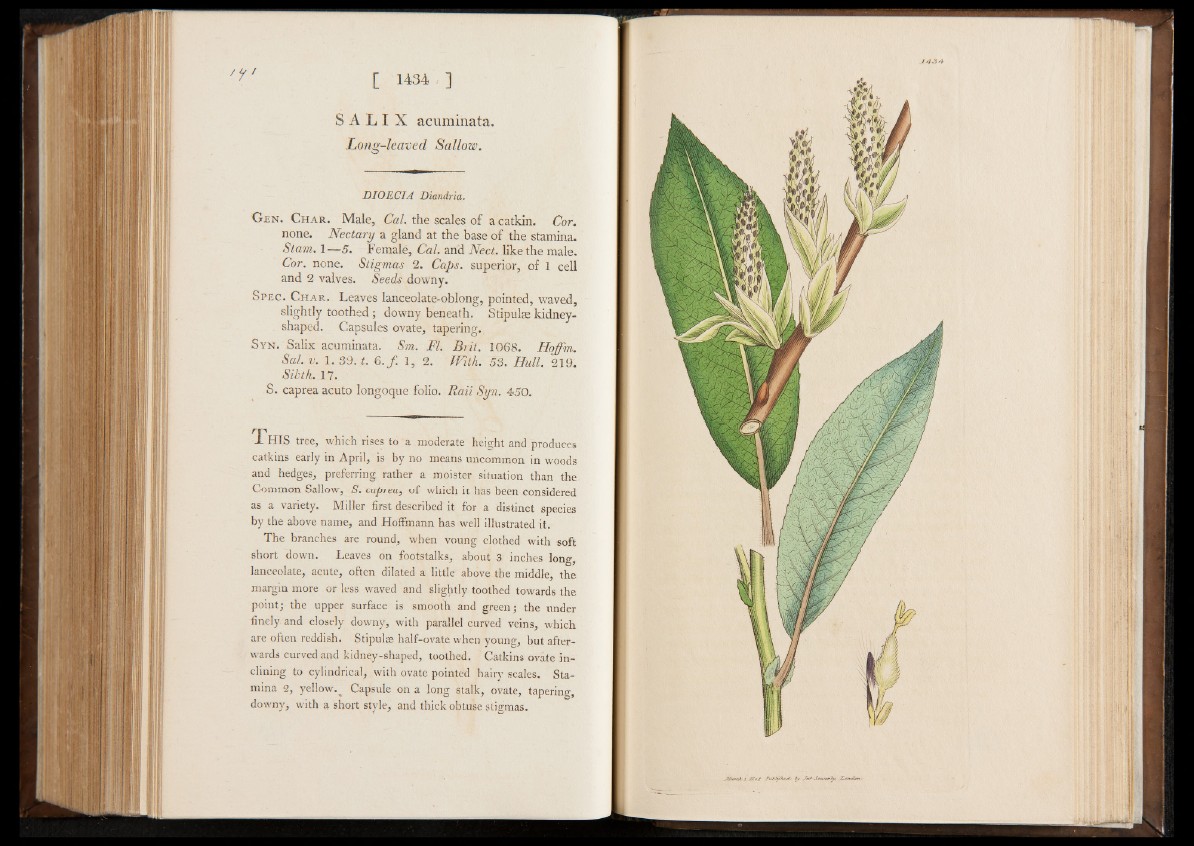
S A L I X a c um in a ta .
Long-leaved Sallow.
DIOECIA Diandria.
G en. Char. Male, Cal. the scales of a catkin. Cor.
none. Nectary a gland at the base of the stamina.
Siam. 1— 5. Female, Cal. and Nect. like the male.
Cor. none. Stigmas 2. Caps, superior, of 1 cell
and 2 valves. Seeds downy.
Spec. Char. Leaves lanceolate-oblong, pointed, waved,
slightly toothed ; downy beneath. Stipulse kidney-
. shaped. Capsules ovate, tapering.
Syn. Salix acuminata. Sm. FI. Brit. 1068. Hoffm.
Sal. v. 1 . 39. t. 6 .f . 1, 2. With. 53. Hull. 219.
Sibtk. 17.
S. caprea acuto longoque folio. Rail Syn. 450.
T h i s tree, which rises to a moderate height and produces
catkins early in April, is by no means uncommon in woods
and hedges, preferring, rather a moister situation than the
Common Sallow, £. caprea, of which it has been considered
as a variety. Miller first described it for a distinct species
by the above name, and Hoffmann has well illustrated it.
The branches are round, when voung clothed with soft
short down. Leaves on footstalks, about 3 inches long,
lanceolate, acute, often dilated a little above the middle, the
margin more or less waved and slightly toothed towards the
point; the upper surface is smooth and green; the under
finely and closely downy, with parallel curved veins, which
are often reddish. Stipulée half-ovate when young, but afterwards
curved and kidney-shaped, toothed. Catkins ovate inclining
to cylindrical, with ovate pointed hairy scales. Stamina
2, yellow.^ Capsule on a long stalk, ovate, tapering,
downy, with a short style, and thick obtuse stiffmas.